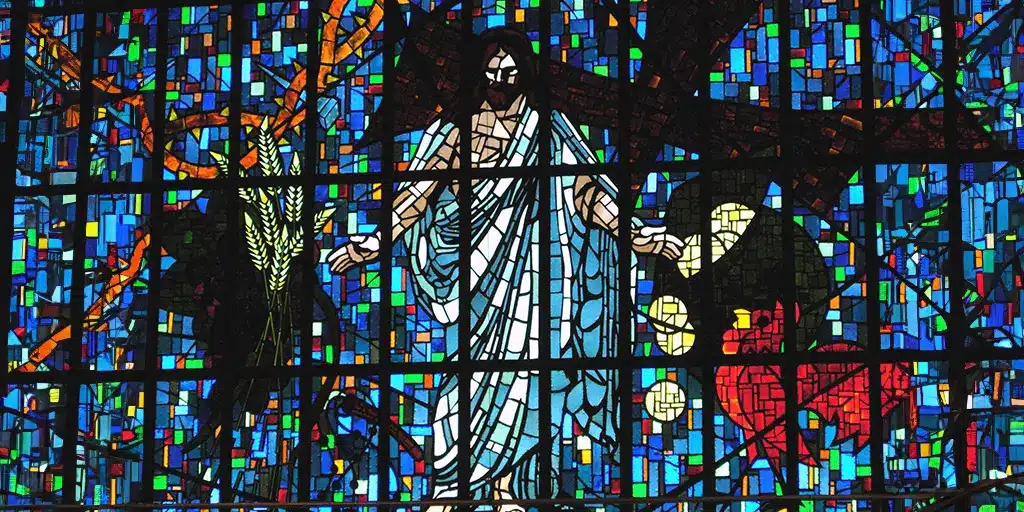Types of the Coming Christ: Discovering Jesus in the Old Testament

Throughout the Old Testament we find numerous people, places and things that point us to the Messiah who was to come, and to what He would do for His people. In this article we will look at just three of those types: a person, a place, and a thing.
The Person – Adam
It’s hard to pick just one person who prefigures Jesus, but Adam is a good place to begin. Adam, of course, was the first man. God created him and gave him a job to do: “Be fruitful and increase in number; fill the earth and subdue it. Rule over the fish in the sea and the birds in the sky and over every living creature that moves on the ground” (Genesis 1:28.).
Albert Mohler explains, “While God has created a good world, it is a world that is wild, and one that people need to tame and subdue and develop. They need to harness its energy, cultivate its plants, harvest its crops, and fill its spaces. Human work is a blessing and not a curse; it is a means by which God exercises his rule over the created order.”[1]
Unfortunately, Adam flunked his test. He failed to obey God, and as a result sin and death entered into the world. Gratefully, we are not left in that state of sin and death forever, for we are told, “For since death came through a man, the resurrection of the dead also came through a man. For just as in Adam all die, so also in Christ all will be made alive” (1 Corinthians 15:21-22).
Tony Evans says of these verses,
…the first Adam was a death-dealer, the last Adam is a life-giver. People who are related only to the first Adam will only see physical life. Their future is eternal death. But people who are related to the last Adam not only have the life of the first Adam physically, they have the life of the last Adam eternally, which is a better life.”[2]
“The first man Adam became a living being; the last Adam, a life-giving spirit” (1 Corinthians 15:45).
The Place – The Tabernacle
During Israel’s time in the wilderness, and even after they entered the Promised Land, the Tabernacle was the place where the people would go to encounter their God. Justin Taylor describes what the tabernacle meant for Israel:
“First, the tabernacle is seen as a tented palace for Israel’s divine king. He is enthroned on the ark of the covenant in the innermost Holy of Holies (the Most Holy Place). His royalty is symbolized by the purple of the curtains and his divinity by the blue. The closer items are to the Holy of Holies, the more valuable are the metals (bronze→silver→gold) of which they are made.”[3]
Further,
“John 1:14 tells us that ‘the Word became flesh and dwelt [Gk. σκηνόω] among us’. In other words, when Jesus became the God-man he ‘tabernacled’ among us. (And of course Jesus spoke about ‘the temple of his body’ [John 2:19, 21], and Paul taught that because we are united to the risen Messiah ‘we are the temple of the living God’ [2 Cor. 6:16].)”[4]
And in 1 Peter 2:5, we are told that we “like living stones, are being built into a spiritual house to be a holy priesthood, offering spiritual sacrifices acceptable to God through Jesus Christ.” Today we are God’s tabernacle here on earth!
The Thing – The Bronze Serpent
The bronze serpent found in Numbers 21 is hardly a subtle prefigurement of Christ. Israel is in the wilderness. Once again they are grumbling and complaining against Moses. Once again God brings discipline upon them, this time in the form of poisonous snakes. Death seems inevitable. Does that remind you of what happened in the Garden of Eden? Once again man’s disobedience, man’s determination to find his own way, has brought death upon him.
But once again God provides a way of escape. This time, He directs Moses to fashion a snake, most probably shaped like the poisonous snakes that were raining death upon the people. The remedy for their problem was simple. For some, maybe too simple:
“The Lord said to Moses, ‘Make a snake and put it up on a pole; anyone who is bitten can look at it and live.’ So Moses made a bronze snake and put it up on a pole. Then when anyone was bitten by a snake and looked at the bronze snake, they lived.” (Numbers 21:8-9).
Many hundreds of years later Jesus would refer to this incident in His conversation with Nicodemus:
“Just as Moses lifted up the snake in the wilderness, so the Son of Man must be lifted up, that everyone who believes may have eternal life in him.
“For God so loved the world that he gave his one and only Son, that whoever believes in him shall not perish but have eternal life. For God did not send his Son into the world to condemn the world, but to save the world through him. Whoever believes in him is not condemned, but whoever does not believe stands condemned already because they have not believed in the name of God’s one and only Son.” (John 3:14-18)
Just as it was in Moses’ day, we have the option to look to Him and live! He has given us that choice by His death on the cross. And here is Jesus’ promise to all who look to Him for salvation. Jesus promises, “All those the Father gives me will come to me, and whoever comes to me I will never drive away”!
- R. Albert Mohler, Jr., NIV Grace and Truth Study Bible, © 2021 by Zondervan. Accessed at biblegateway.com.↑
- Tony Evans, Theology You Can Count On: Experiencing What the Bible Says About… God the Father, God the Son, God the Holy Spirit, Angels, Salvation… (Moody Publishers. Kindle Edition).↑
- Justin Taylor, “What Does the Tabernacle Symbolize?” https://www.thegospelcoalition.org/blogs/justin-taylor/what-does-the-tabernacle-symbolize/, emphasis his.↑
- Ibid.↑






